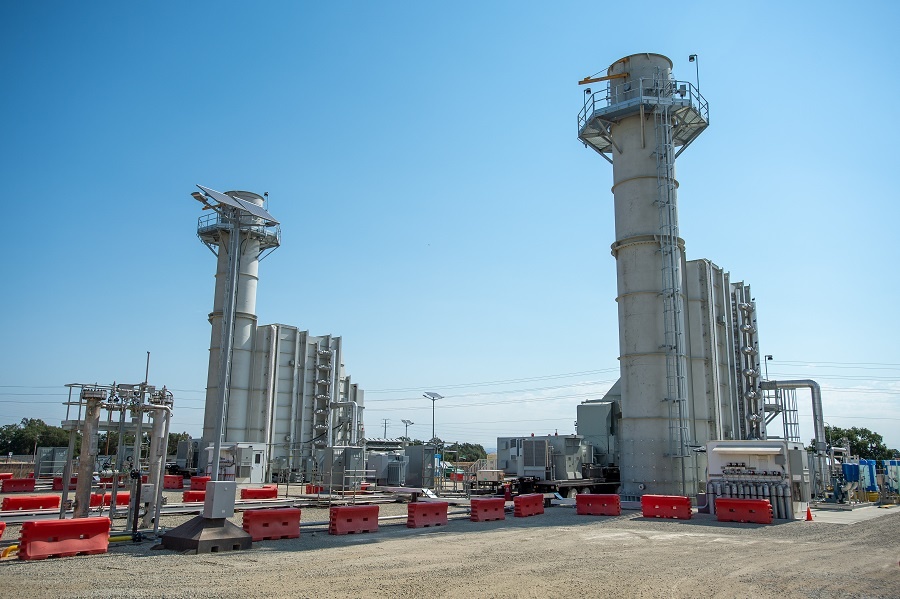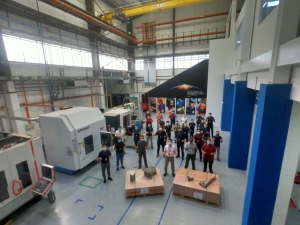Boosting Vietnam's grid stability through gas turbine technology
With its pledge to achieve carbon neutrality by 2050, Vietnam is determined to stop developing new coal projects and reduce reliance on coal power. Gas plays a key part in this as the greenest non-renewable alternative and fuel of choice until the infrastructure, technology, and financing schemes are developed for renewables – and will likely stay a complement long into the future.
The PDP8 targets significant growth in gas energy capacity from 7GW in 2020 to 39.4GW by 2030, reaching a cap of 46.9GW by 2035.
While a full turn to renewables is not yet on the cards, combining natural gas and hydrogen could be a green and cost-efficient step in the right direction.
 |
| Aeroderivative gas turbines support Roseville power plants |
World-class tech to drive green transition
A reliable network based on renewables needs to produce a surplus during peak production times and have sufficient battery storage to keep this for slower production cycles. As neither the technology nor the infrastructure is available just yet for a grid to operate on renewables alone, gas turbines offer the necessary flexibility to firm up intermittent supply.
GE’s gas turbine fleets already play an important role in Vietnam’s energy transition. In May 2021, the company announced its first order for H-class gas turbines for PV Power’s Nhon Trach 3 and 4 power plants. Once operational, the plants will deliver 1.6GW of electricity and will be the country's first power plants fueled by liquefied natural gas.
The project is expected to open up a new chapter for gas power generation in Vietnam by bringing in GE’s world-leading turbines, offering unparalleled efficiency and flexibility to power producers.
In early 2022, GE also reported an order of six of its advanced aero-derivative gas turbines, the LM2500XPRESS, to Taiwan Power Company. With the capability to start in five minutes or even less, these units can perform daily starts and stops to complement fluctuating renewable power production.
The flexibility and responsiveness provided by the new turbines will facilitate Taiwan’s ambitions to expand renewables in its energy mix to 25 per cent by 2025. Additionally, with topline emissions reduction technology, NOX and CO2 emissions can be reduced by as much as 90 per cent, thus allowing power producers to reduce emissions significantly.
“GE’s LM2500XPRESS can support the diversification into fast, flexible, more efficient gas technologies that will help balance the electricity grid, meet future demand, and support the increased use of renewable solar and wind power,” said Ramesh Singaram, president & CEO GE Gas Power Asia. “It is also one of the suitable solutions for countries eager for fast, flexible and sustainable power, like Vietnam.”
Like Taiwan, Vietnam’s draft power plan has also recognised the necessity of flexible adjustments to ensure the stable operation of the power system with a high ratio of renewable sources.
Across Asia, around 317 of GE’s aero-derivative turbines have been installed and supporting power plants’ operators to manage power shortages, stabilise the grid and speed up the integration of renewables.
Low-carbon alternative
“By operating on low- and zero-carbon fuels like hydrogen, combined with carbon capture and sequestration technologies, modern gas turbines, whether heavy duty or aero-derivative, can achieve low or near zero carbon generating footprint,” said Singaram. “For instance, our LM2500 family of aero-derivative gas turbines have over 6 million operating hours using fuels with hydrogen concentrations reaching up to 95 per cent.”
Hydrogen has the potential to decarbonise major carbon-emitting sectors such as power, heat generation and transport. It is an abundant, clean and flexible resource, and there are various convincing use cases in the world, led by Japan, Australia and South Korea. It has also been proved that it is possible to retrofit GE natural gas turbines for hydrogen burning, opening up exciting decarbonisation options for power producers.
According to the latest McCoy Power Report, the company has amassed more experience in operating gas turbines running on hydrogen than any other. GE has over 100 turbines supporting power generation with hydrogen and associated fuels worldwide, and its combustion technologies can operate on hydrogen concentrations of up to 100 per cent (by volume).
Driven by policies and a vision combining long-term economic growth with positive environmental impact, Vietnamese has seen the rapid expansion of solar and onshore wind in the past years through a beneficial feed-in tariff (FiT) mechanism.
This put the country in the top 10 in terms of installed solar capacity in 2020 with 16.5GW. The country’s net-zero commitment by 2050 also sets significant political capital to support renewable development.
“GE has been participating in the dialogue on Vietnam’s energy transition. We see great will both on the parts of power producers and the government and stand ready to support their ambitions with cost-effective and efficient solutions to complement the blossoming renewable energy development,” said Singaram.
The company recently organised a series of discussions with key stakeholders in Vietnam’s energy sector, both public and private, to share the latest technology development of fast and flexible power options and how it could help Vietnam accelerate its goal of enabling the integration of increasing amounts of renewables.
 | GE boosts servicing of industry-leading HA gas turbines GE, a world leader in natural gas power technology, services, and solutions, has just announced the completion and delivery of the first repaired HA component from its recently opened Advanced Manufacturing and Repair Technology Centre (AMRT) in Singapore. |
 | GE launches 2021 annual reports Global energy giant GE has published its 2021 annual report in mid-February detailing its progress in creating a more connected, healthy, and sustainable future. |
What the stars mean:
★ Poor ★ ★ Promising ★★★ Good ★★★★ Very good ★★★★★ Exceptional
Related Contents
Latest News
More News
- Addressing Vietnam's energy challenges with aeroderivative gas turbines (February 28, 2023 | 09:33)
- How to sprint ahead in 2023’s worldwide energy priorities (February 08, 2023 | 13:55)
- Healthcare trio collaborates to provide thousands of free breast scans (October 27, 2022 | 17:19)
- GE Healthcare's vision for AI-backed radiology (September 29, 2022 | 11:53)
- GE brand trio to shape the future of key industries (July 19, 2022 | 15:35)
- GE unveiling brand names and defining future (July 19, 2022 | 15:16)
- GE: the shortest route towards sustainability (July 18, 2022 | 08:00)
- Be proactive in an uncertain world (May 20, 2022 | 11:40)
- GE secures first 9HA combined cycle power plant order in Vietnam (May 16, 2022 | 17:06)
- 5 things that make GE a happy place to work (April 29, 2022 | 07:58)

 Tag:
Tag:






















 Mobile Version
Mobile Version